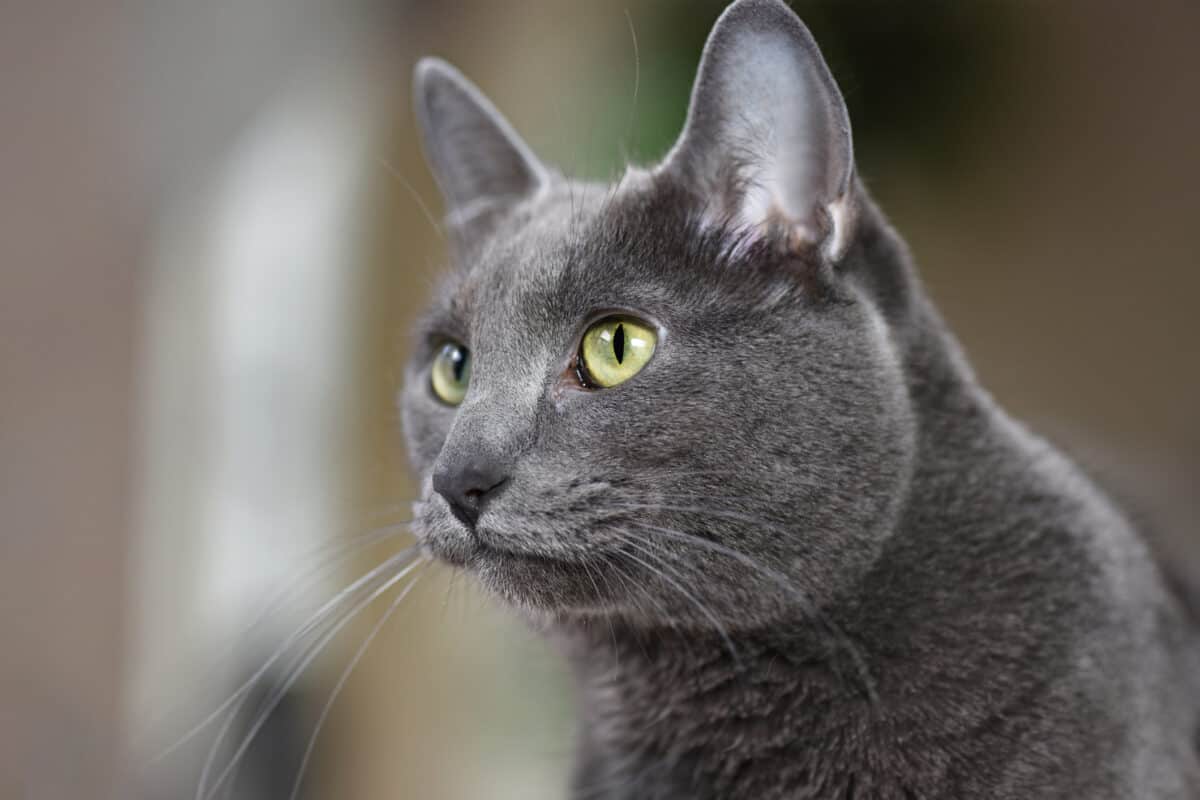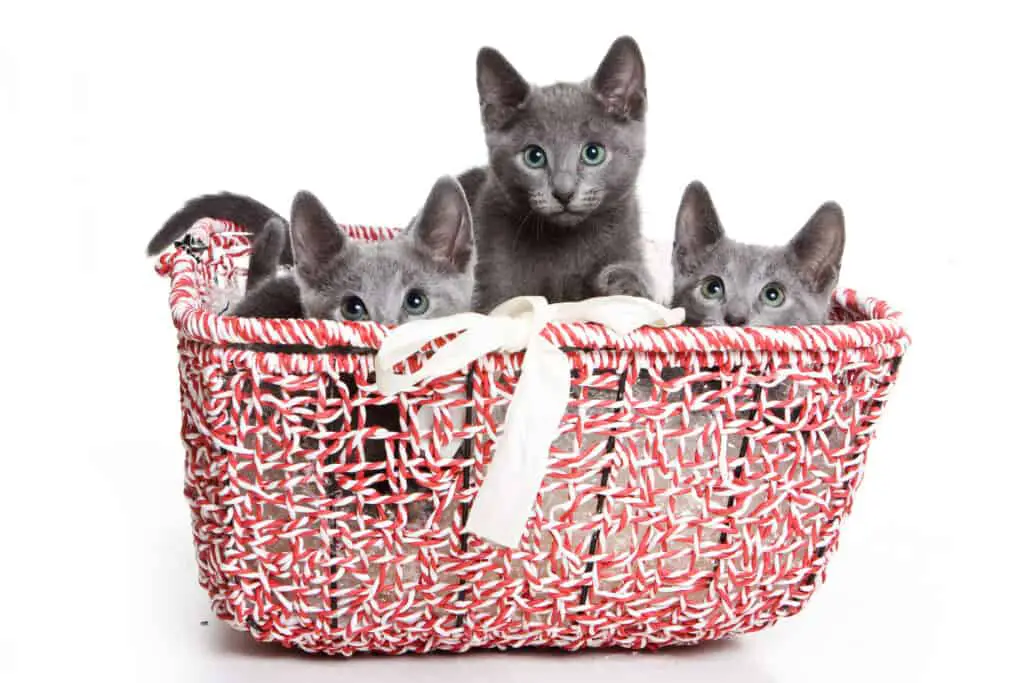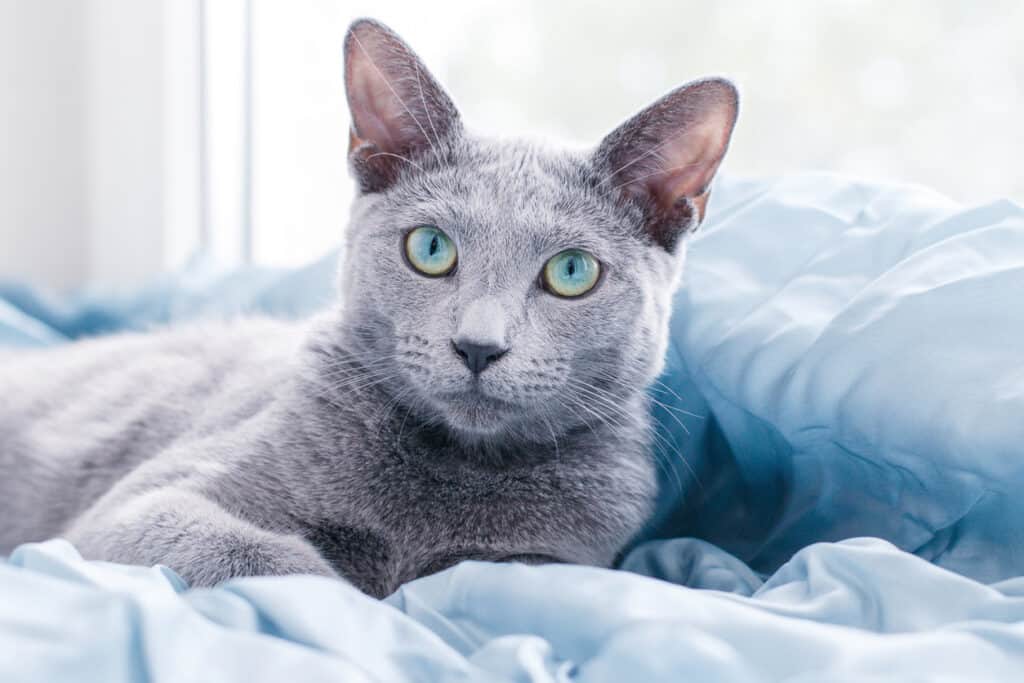Both the Russian Blue and the Korat share many striking similarities, such as their affectionate personalities, high intelligence, and beautiful silvery blue coat.
In fact, it can be argued that both breeds are identical and the same breed, just originating over 3,000 miles apart. Let’s have a look at the other differences of Russian Blue versus Korat cats.
Russian Blue versus Korat – The Differences.
There are some differences between the Russian Blue and the Korat cat that a keen eye can spot. Not only are there nuances in each breed’s personality, but also in physical appearance – although these cats look identical from afar.
The most important differences between the Russian Blue and Korat cat are their origin, subtle differences in character, and their build.
The Russian blue originated from the cold northern regions of Russia, while the Thai Korat spent its early days in the hot, humid jungles of Thailand and its surrounding regions.
In this article, we will compare and contrast the Russian blue and the Korat – from its physical appearance to personality traits.
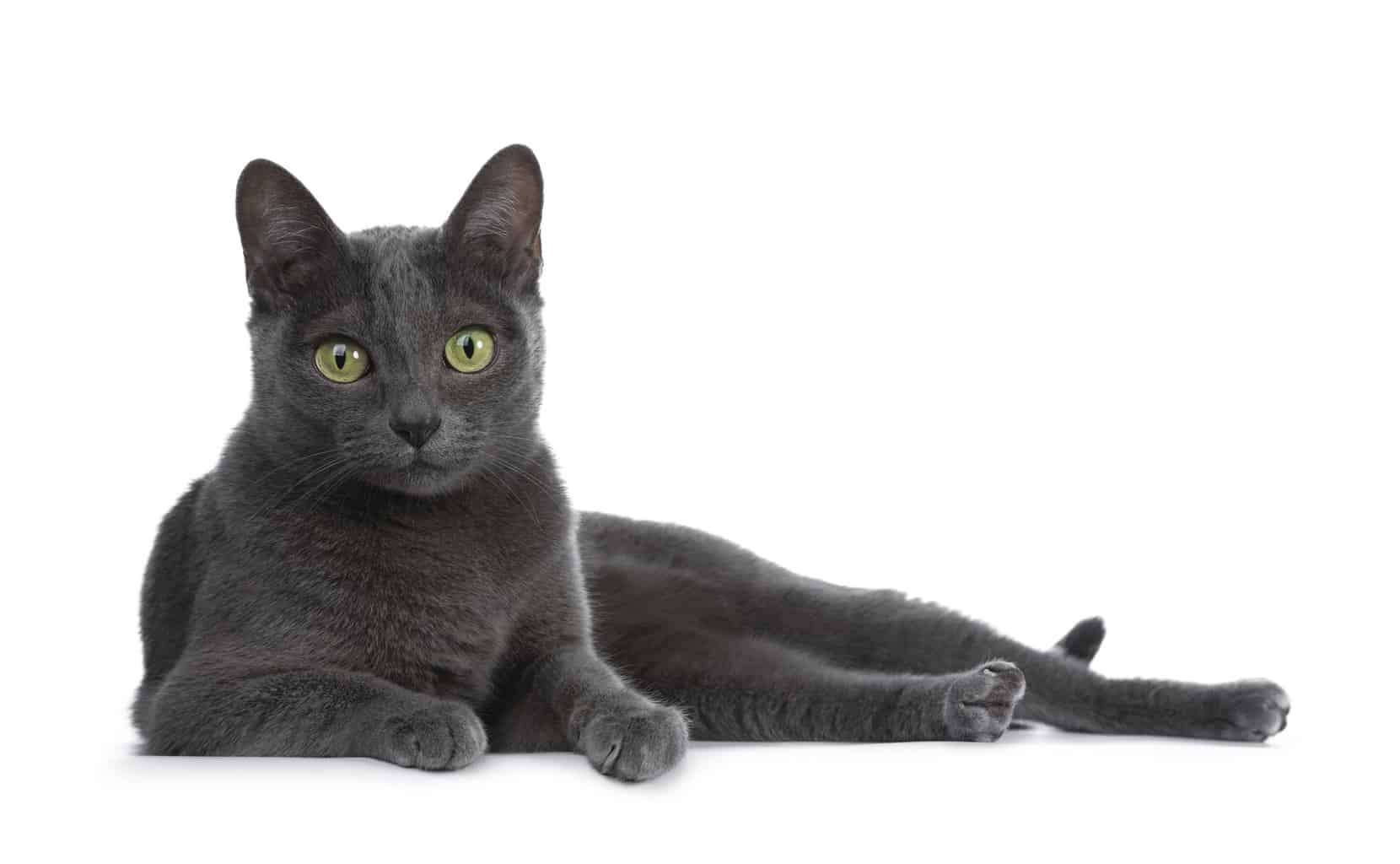
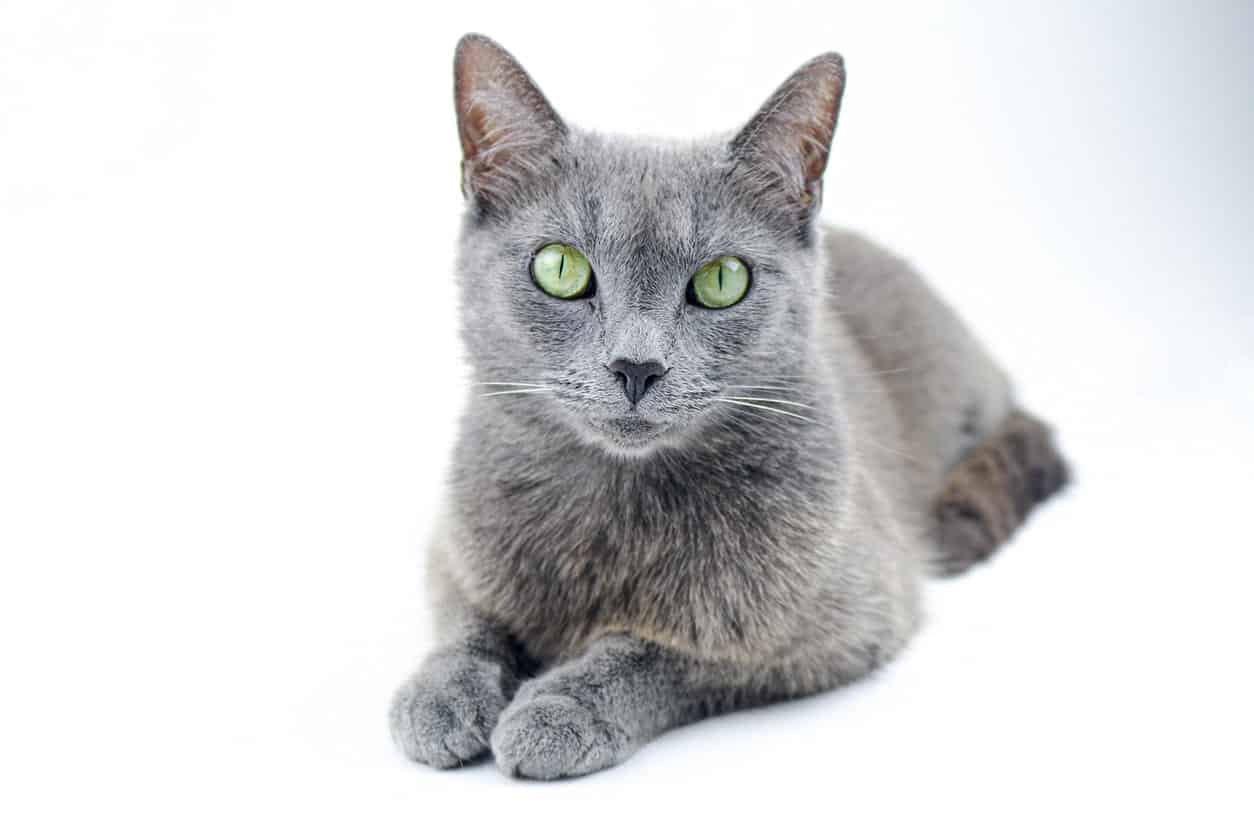
The Russian Blue: Origins and History
The friendly and loyal Russian blue is known for its docile personality and short, dense coat ranging in color from shimmering silver to slate gray. Its eyes are always bright green, often ringed with yellow or amber.
While it’s theorized that the Russian blue existed in the snowy forests of northern Russia for hundreds of years, it came into prominence in the 1860s, when British soldiers reportedly brought these cats to their home country from the northern Russian port city of Arkhangelsk.
In this city, the Russian Blue got its nickname, Arkangel Blue.
The Korat: An Overview
This ancient cat breed is believed to date back to 1350 AD, when the first mentions and descriptions of the Korat were found in the Cat Book Poems (or Tamra Maew in Thai) – a manuscript of collected poems and paintings about 17 cat breeds that were considered lucky in Thailand during the time.
The Cat Book Poems has greatly helped historians with revealing the origins of certain cat breeds, most – if not all – are still around today.
Other breeds mentioned in this collection of manuscripts are the Siamese, the Burmese, and the Havana Brown. Its presence in the Cat Book Poems suggests that the Korat is one of the oldest cat species in the world.
Unlike the Siamese cat, which was highly prized by the royalty of Thailand and other east Asian nations, the Korat was considered a cat of the people – a companion of commoners that would bring good luck to one’s household.
The Korat has a short, slate-gray coat with a silver finish and bright, luminous green eyes. A sleek and graceful cat with long, slender limbs, the Korat has a loving, affectionate personality, and a medium activity level – a playful breed without being overly hyper.
Physical Traits: The Russian Blue
Body
This breed is graceful and lean – sleek without being bony and muscular while not stocky. The legs are long and slender, with small, rounded paws.
As this breed’s name suggests, the Russian blue is best known for its beautiful silvery gray coat that is consistent over the cat’s entire body. The double fur is dense, keeping its skin warm and dry, and the fur is soft and silky to the touch.
Head
The Russian blue has a head that appears vaguely triangular in appearance, not as broad as many other similar breeds, such as the British shorthair. Russian Blues also have triangular ears with pointed rather than rounded tips.
One of the most distinctive facial features of the Russian blue is that the corners of its mouth are upturned, giving it a perpetual Mona Lisa smile.
The Russian blue’s large, round eyes give it a perpetually alert appearance. They are wide set, exacerbating the triangular head shape. The eyes are always bright green, occasionally rimmed with amber or yellow, especially when young.
Physical Traits: The Korat
Body
This breed’s body is muscular, supple, and broad-chested. Slightly stockier than the Russian blue, but not by much. Legs are long and well-proportioned to the body, with the front legs slightly shorter than the back legs. The paws are oval rather than round.
Head
The head and face are heart-shaped with a defined chin. The ears are large enough to be considered somewhat disproportionate to the rest of the head, and the tips of the ears are rounded rather than pointed.
The Korat has large eyes – almost disproportionately so. The eyes are either bright green or amber, with kittens almost uniformly having yellow or amber eyes that don’t turn green until adulthood.
The Korat’s short fur is single-coated rather than double-coated like the Russian Blue, giving it less density and a finer feel.
The fur lies flat against the body rather than straight up. The coat is uniformly silvery blue over the entire body, with kittens sometimes exhibiting faint tabby stripes.
Personality: The Russian Blue
The Russian blue is known for being a quiet, independent, gentle cat that is affectionate with its humans but will be shy and reserved around strangers.
They are playful and usually laid back, possessing high intelligence, which makes them an easy breed to train.
Russian Blues don’t cope well with change and will show signs of distress with big changes such as moving around furniture, let alone moving house. Or, when welcoming a new family member to your home.
Personality: The Korat
This social, playful, and lively cat loves to play and is highly affectionate with its humans. It craves attention and won’t bode well being left alone for long periods of time – a condition that doesn’t affect Russian blues.
The Korat is a little more comfortable around strangers and is naturally curious. This is why the Korat often does better in crowdy homes or places where it has to interact with strangers.
Russian Blue Secret Weapon – Hypoallergenic
One of the best features of the Russian blue is that it’s considered a hypoallergenic breed since it has short hair and seldom sheds.
This cat also reportedly produces lower levels of glycoprotein Fel d 1 than other breeds – a common allergen. These features make the breed a great choice for cat-loving allergy sufferers.
Although Russian Blue cats are one of the best possible choices for people who suffer of mild allergies, cats are never 100% hypoallergenic. Want to know why? Have a look at our explanation here: Why Russian Blues Are Good For Allergic People.
Suggested reading: Do Russian Blues Shed a Lot?
Which Breed Should I Adopt?
When deciding between a Russian blue and a Korat, your lifestyle should be a major consideration apart from your personal preference.
If you work a lot and don’t spend much time at home, the Russian blue would be a better choice, as they are more independent and won’t be bothered by long periods left alone.
While both breeds get along well with children, the Korat is more playful and might be more entertaining for your family if you have ample time to spend at home.
Love cats?
Then you will also love our other content. Have a look at these popular posts on our website.
-
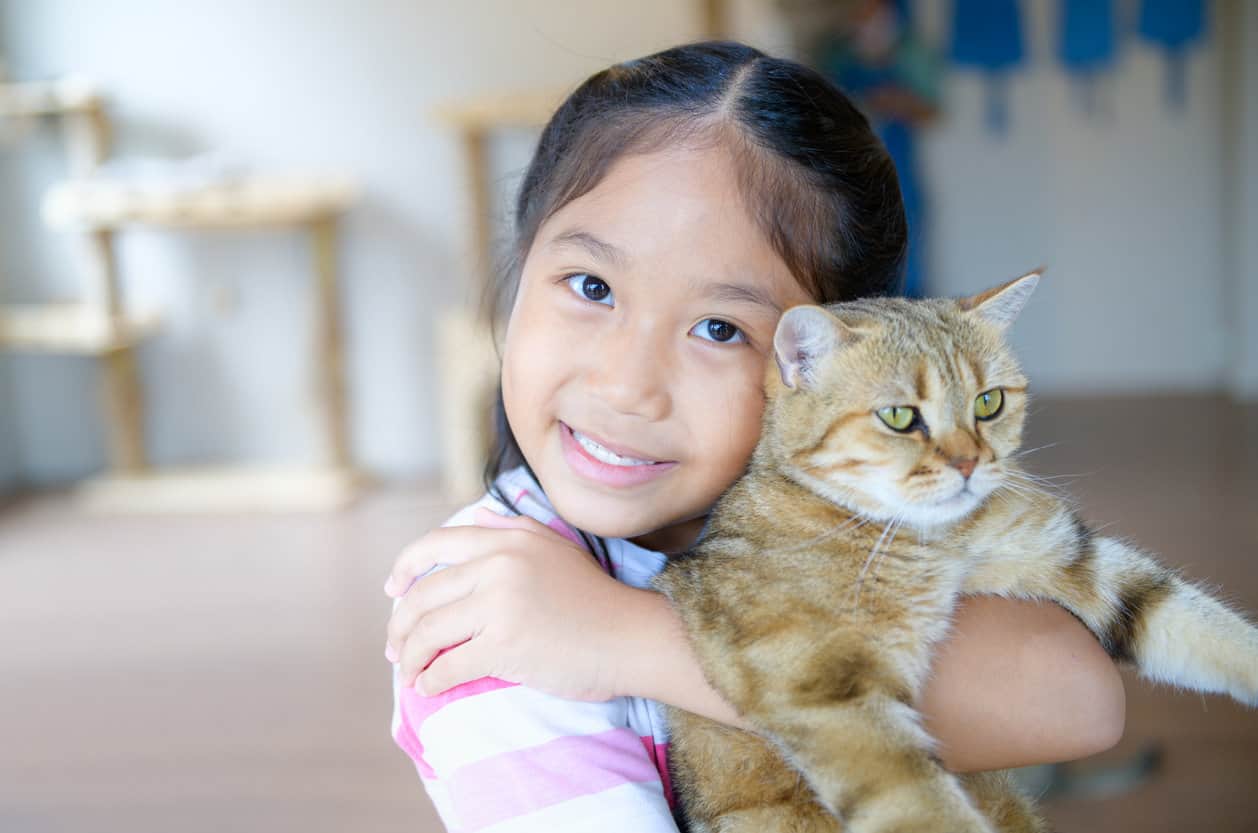
10 Ways to Make Your Cat Live Longer
The oldest cat to ever live passed away at the old age of 38. On average, household cats live between […]
-
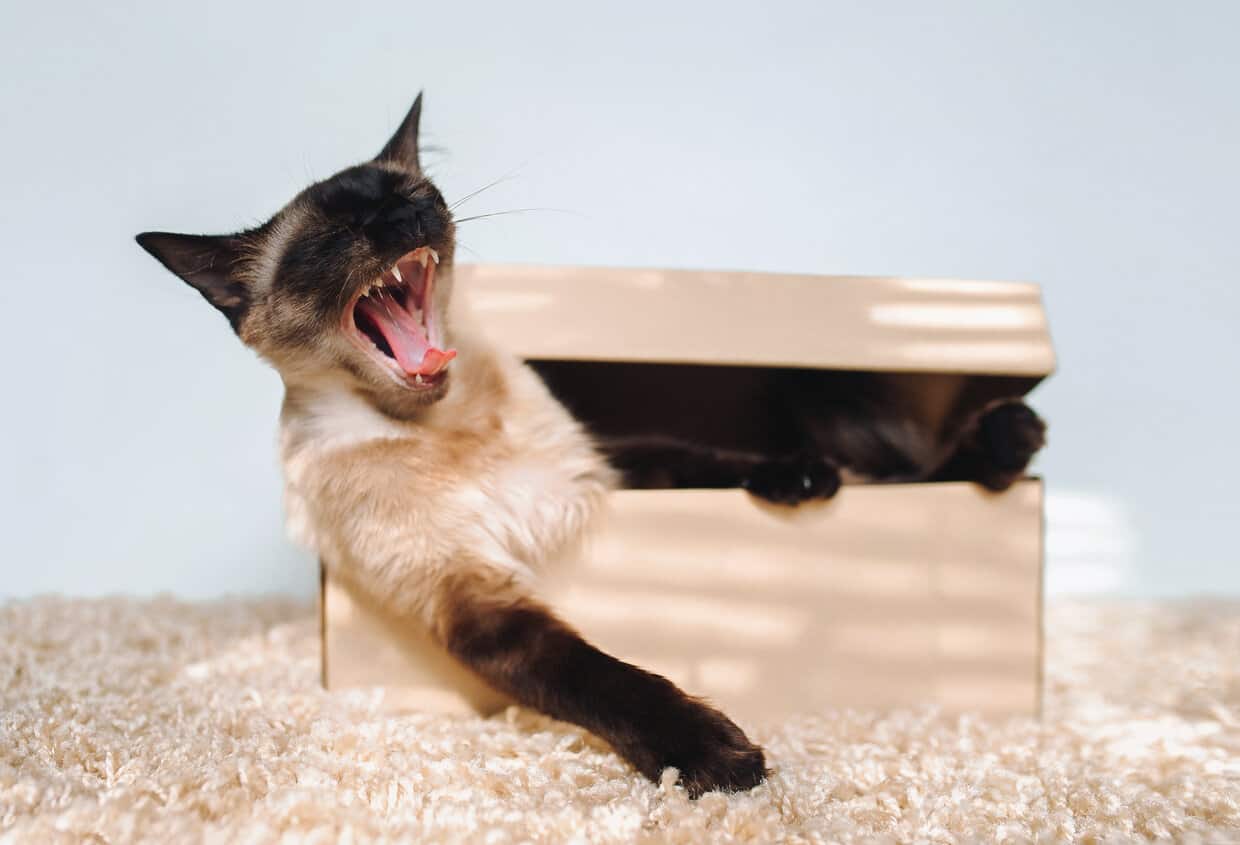
12 Reasons Why Siamese Cats Cry at Night
Siamese cats are a popular breed of cats that many people choose to have as pets. Perhaps you have heard […]
-
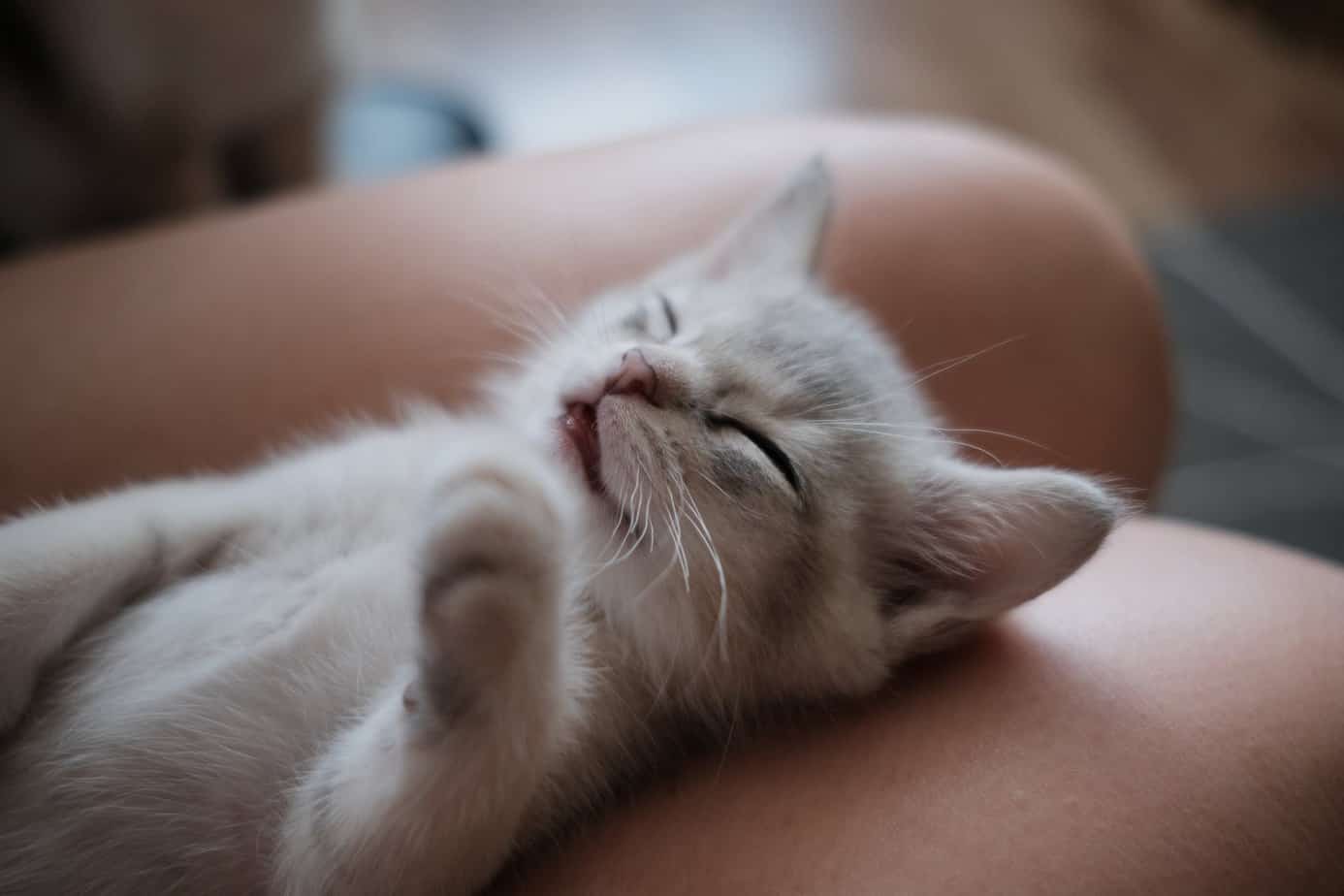
15 Incredible Ways That Cats Show Affection For Humans
Wondering how cats show their affection for humans? We have listed several incredible ways that cats are trying to show their love for us.

